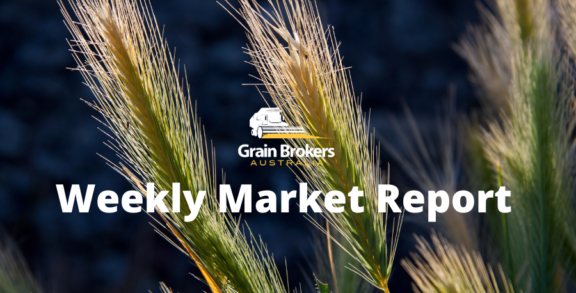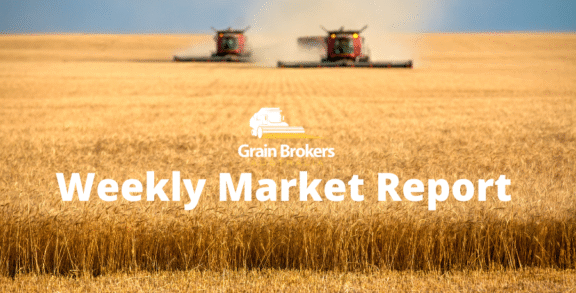
Export demand surfaces as harvest ramps up …
By Peter McMeekin
As harvest of the drought ravaged winter crop gains momentum here in Australia, the European farmer is also very busy, juggling their summer crop harvest program with the seeding of their winter cereals, oilseeds and pulses.
The European summer was warmer and significantly drier than normal, and these unseasonal weather conditions have continued into the autumn. Whilst this is the ideal scenario for the summer crop harvest, it is seriously hindering the planting and emergence of the winter crops in affected areas.
The driest regions stretch from northern France, through Belgium, northern Germany and into the drought declared areas of eastern Poland and northern Czech Republic. Further south, most of the Balkan Peninsula countries are also extremely dry. The seeding program is lagging behind the five-year average in all of these regions.
At the moment the rapeseed crop has been the most affected, decreasing the area sown and compromising emergence. The optimal sowing window is August through to mid-September in most of Europe and good early development before the winter sets in is critical for good yields.
Some farmers have been lucky enough to sow into moisture, some have sown dry, but others have simply abandoned their rapeseed program in favour of more attractively priced cereals, primarily wheat. Forecasts suggest that the European Union (EU) rapeseed area could be down as much as 8 per cent compared to last season.
The planting window for cereals is still open and the program is ongoing. The area planted to wheat is forecast to be higher than last year due to higher wheat prices. Add the swing from rapeseed and the program is significant. However, there is already talk of resowing in isolated pockets, due to extremely poor emergence.
Significant rainfall is still required in many regions to ensure that the potential area is actually planted. The risk here is that temperatures start to drop, and it becomes very difficult to get into fields before the winter sets in, leaving some European countries well short of their intended crop area. It is far too early to be raising any alarms but the potential impact on European wheat production and global prices are significant
The favourable weather sees the French corn harvest 13 days ahead of the long-term average. It is reportedly 91 per cent complete, up 10 points week-on-week and compares to 70 per cent at the same time last year.
In Ukraine, planting of the winter wheat and winter barley crops has been progressing smoothly, with both around 95 per cent complete. Their corn harvest is reported to be around 62 per cent complete, with 19.5 million metric tonne (MMT) in the bin. This puts them on track for a record 31.5MMT crop, up almost 30 per cent on last year.
There have been reports of renewed interest from the Chinese for Ukraine corn for the first quarter of 2019. China corn demand remains a mystery. They have auctioned more than 100MMT of reserve corn into their domestic markets this year. One would think that may spur some buying activity but the September imports of just 40 thousand metric tonne (KMT) were the lowest since November 2016.
Ukraine has reportedly exported 12.1MMT of grain since the beginning of July. This is 0.5MMT lower than at the same point last season and is made up of 7.1MMT of wheat, 2.5MMT of barley and 2.3MMT of corn. Ukraine expects their final grain harvest total for the season will be 64MMT, compared to 61.3MMT in 2017. This would be second only to 2016 when the total grain harvest was 66MMT.
Russia surprised the market by increasing their total 2018 grain production forecast to 109MMT. This is up from 106mmt last month after favourable weather in Siberia led to a better than expected wheat harvest in the east of the country. The higher production number leaves 38-39MMT of total grains available for export this season.
The trade interpreted this as another sign that the risk of export wheat restrictions was easing. However, Russian exports are running 34 per cent ahead of the same time last year and domestic consumers have been asking the government to assure wheat supply. Internal Russian wheat values continue to strengthen which suggests up-country supplies are tightening.
The recent downward move in wheat values saw Egypt (GASC) issue a wheat tender last week for mid-December delivery. Russia dominated once more, supplying 350KMT of the 470KMT purchased and Ukraine sold 60KMT into the tender. The biggest surprise was 60KMT of US origin soft red winter wheat offered at less than US$220 Free On Board (FOB). This was more than US$15 under the average of the successful Russian offers, all of which is negated by the difference in freight costs to Egypt. That said, it certainly put a fire under wheat futures at the end of last week.
Making news here in Australia over the past week was the 420kmt added to the shipping stem in Western Australia. This is the largest weekly increase since May this year but quite small relative to a more normal season. Some cargos may be destined for the east coast but some are undoubtedly going international. This confirms that Australian exporters are seeing demand at current FOB values and are competitive against Black Sea offers.
Whilst the lower Aussie dollar will certainly assist, inelastic Asian demand and the expected slowdown in Black Sea offers should ensure that Australia continues to pick up the required demand for an export wheat and barley program that will be the lowest in many years and could easily be under 8MMT and 3MMT respectively.





